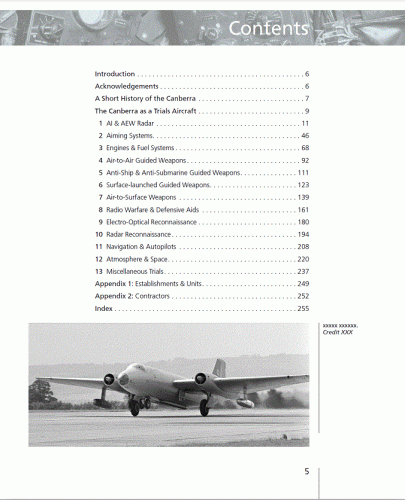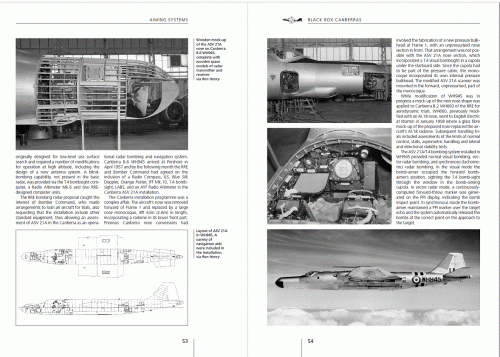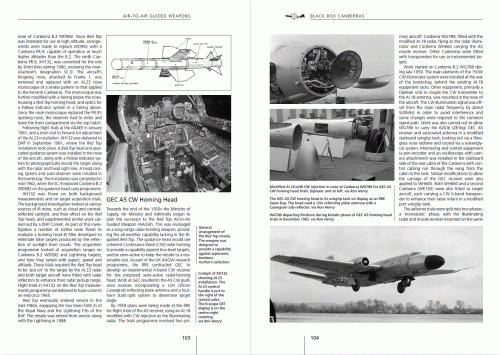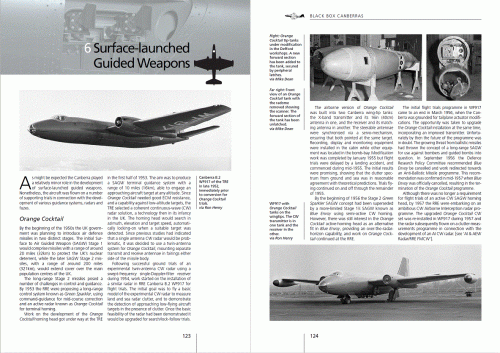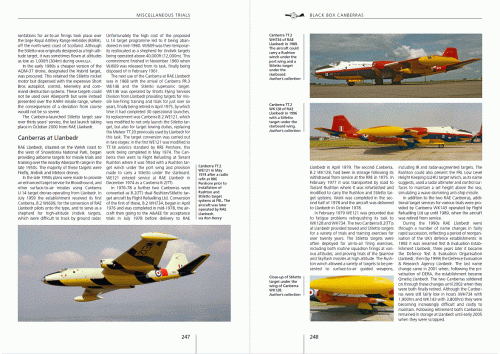phil gollin
ACCESS: Secret
- Joined
- 19 September 2007
- Messages
- 243
- Reaction score
- 89
.
Another find on Amazon.co.uk ;
Black Box Canberras: British Test and Trials Canberras Since 1951
Hardcover
– 30 Sep 2016
by Dave Forster (Author)
https://www.amazon.co.uk/Black-Box-Canberras-British-Trials/dp/1902109538/ref=cm_wl_huc_item
English Electric's Canberra saw an unbroken 46 years of service in the UK as a test and trials aircraft from 1951 until final retirement in 1994. Flown by Government research establishments, military units and military defence contractors on a vast range of tasks, the versatile Canberra contributed to the development of aircraft engines, airborne radars, reconnaissance sensors, aircrew equipment, nuclear weapons, conventional armament, missiles and much more.
The Canberra was flown in particular as a platform for the majority of post-war UK-developed airborne interception radars, from AI.18 through AI.20, AI.23 and a number of experimental radars, to AI.24 Foxhunter and beyond.
Other projects covered included missile program; electro-optical sensors for the TSR-2 optical linescan; reconnaissance radars for the V-Force and the TSR.2's P.391 SLAR and the ASTOR SAR that led to the Sentinel R.1. The UK stealth program and the 'Rubber Duck' Canberra is examined as are Double Scorpion and Spectre rocket engines as well as aiming systems and the Q-band strike radar.
The huge variety of airframe modifications and color schemes of these special aircraft are fully illustrated making this an invaluable book for the aviation enthusiast, modeler and historian.
Hardcover: 228 pages
Publisher: Hikoki Publications (30 Sept. 2016)
Language: English
ISBN-10: 1902109538
ISBN-13: 978-1902109534
Product Dimensions: 21.1 x 1.3 x 29.7 cm
Another find on Amazon.co.uk ;
Black Box Canberras: British Test and Trials Canberras Since 1951
Hardcover
– 30 Sep 2016
by Dave Forster (Author)
https://www.amazon.co.uk/Black-Box-Canberras-British-Trials/dp/1902109538/ref=cm_wl_huc_item
English Electric's Canberra saw an unbroken 46 years of service in the UK as a test and trials aircraft from 1951 until final retirement in 1994. Flown by Government research establishments, military units and military defence contractors on a vast range of tasks, the versatile Canberra contributed to the development of aircraft engines, airborne radars, reconnaissance sensors, aircrew equipment, nuclear weapons, conventional armament, missiles and much more.
The Canberra was flown in particular as a platform for the majority of post-war UK-developed airborne interception radars, from AI.18 through AI.20, AI.23 and a number of experimental radars, to AI.24 Foxhunter and beyond.
Other projects covered included missile program; electro-optical sensors for the TSR-2 optical linescan; reconnaissance radars for the V-Force and the TSR.2's P.391 SLAR and the ASTOR SAR that led to the Sentinel R.1. The UK stealth program and the 'Rubber Duck' Canberra is examined as are Double Scorpion and Spectre rocket engines as well as aiming systems and the Q-band strike radar.
The huge variety of airframe modifications and color schemes of these special aircraft are fully illustrated making this an invaluable book for the aviation enthusiast, modeler and historian.
Hardcover: 228 pages
Publisher: Hikoki Publications (30 Sept. 2016)
Language: English
ISBN-10: 1902109538
ISBN-13: 978-1902109534
Product Dimensions: 21.1 x 1.3 x 29.7 cm

